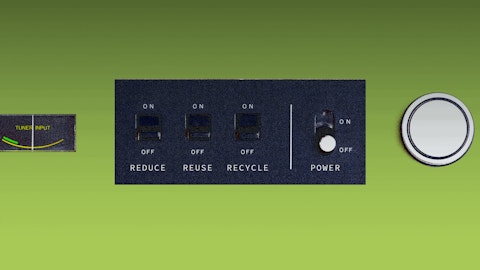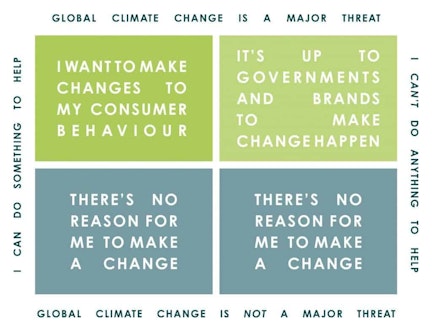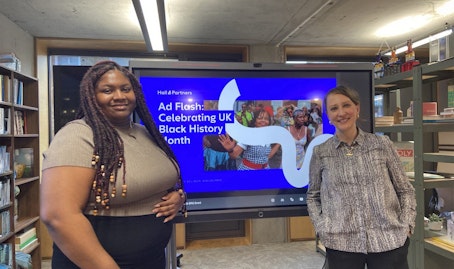Perspectives

The global consumer landscape of the last half century has been driven by ever-greater choice and freedom, with falling costs bringing cheap flights, cheap food and cheap fashion to the emerging middle-classes. But now, with the sustainability agenda becoming increasingly visible, these are the very things consumers are being expected to give up. We’re told that, as individuals, the biggest impact we can make on our personal footprint lies in reducing our consumption of meat and out-of-season, imported produce, in minimising air travel, and in… Just. Buying. Less.
This is clearly a hard ask. We know that behaviour change is challenging, even for the most motivated of people. And while scientific consensus is clear, consumer opinion is still much more nuanced than we might expect. A recent Pew report showed a global average of 29% stating that they see ‘Global climate change as either a minor threat, or no threat at all’. The UK (30%) sits right in the middle while the numbers become increasingly striking in the US (39%), Russia (51%) and Israel (58%).
For these consumers, behaviour change involving such compromises as suggested above is clearly unlikely. Of course, there are also the 71% of consumers who do see global climate change as a major threat. And, from a 2019 YouGov Europe-based study, these consumers are fairly equally split between those who personally feel they could do more (50%) and those who feel they are doing as much as they reasonably can (42%). So, if we think in terms of those who want to change, those who are open to change, and those who are indifferent to change, where does that leave brands?

In line with these audiences, there are three different strategies that brands could potentially consider:
1. Demonstrate rewards
How can brands win more share among those who are already engaged, and help them to make a broader set of sustainable changes to their lives? How can they reward their potential customers and shift the story to a product or service benefit being cheaper, faster, safer, etc. rather than a sustainability compromise?
This strategy is perhaps more of a traditional marketing comms challenge where the context just happens to be sustainability. The audience and product are already in place – it’s up to the brand to communicate the relevance of the latter to the former.
2. Extend ranges
How can brands help consumers who are open to change to follow through on their concerns about the environment by making it easier for them to take action? Can brands extend their ranges to include product versions that are overtly more sustainable in design?
When considering this audience, brands need to make it easier for consumers by taking the hard work away from them, helping them to re-evaluate the ways in which they feel empowered to make more sustainable choices.
3. Reinvent products and propositions
How can brands make change inevitable for everyone buying into their product or service, regardless of attitudes? Can they change the default and reinvent products and propositions to that end?
This third strategy is one that numerous categories and brands have already started adopting, driven as much by regulation, cost and supply chain control as anything else. From LED light bulbs to reduced plastic on myriad packaging solutions, this challenge is well underway.
We’re increasingly seeing brands making their products and propositions more sustainable, whether consumers are asking for it or not. And few consumers are bemoaning the loss of their slightly taller deodorant cans, or the lack of single-use carrier bags in stores. There is minimal downside for brands so it’s certainly possible for them to make these small but significant changes, gaining plaudits from those already engaged, and driving behaviour change from those who aren’t.
And where packaging has led, products and propositions are rapidly following. In the homecare category, where previously they led on environmental and sustainability messages, Method and Ecover now compete on efficacy and style. In the US, Burger King is offering up Whoppers made with Impossible Burgers. And globally, Ikea is pledging to use only recycled materials in their textiles, which will change the default for all of their consumers. In each case, the consumer trigger is different but the net outcome is more sustainable behaviour.
Want to build a sustainable future for your brand?
The sustainability agenda has for a long time focused on the ‘3Rs’ of Reduce, Reuse, Recycle, all of which require conscious effort and behaviour change from consumers. While this holds obvious potential for those already keen to do their bit for the environment, for others it can be an ask too far.
It’s time for brands to think about a new ‘3Rs’ – Rewards, Range extension, Reinvention – moving the balance of responsibility away from just consumers and placing it more equally onto the brands themselves. And to deliver this successfully, brands will need to keep seeking answers to the key questions: Who are their audiences? What do their sustainability needs look like? Can the brand meet these needs through comms, propositions or product? But by changing the narrative from one of loss to one of gain, brands make it easier for all consumers, whatever their underlying sustainability beliefs.








